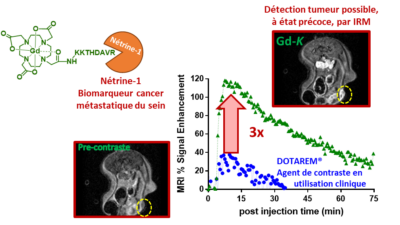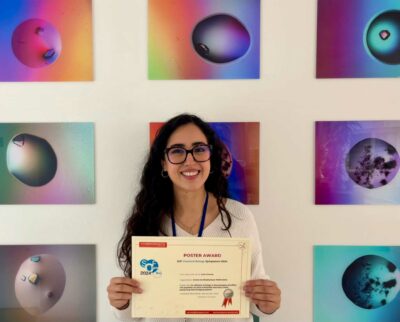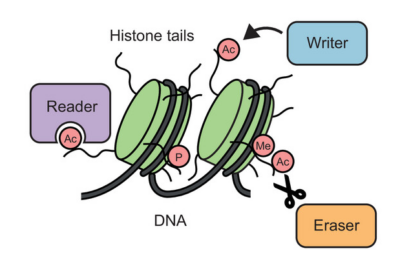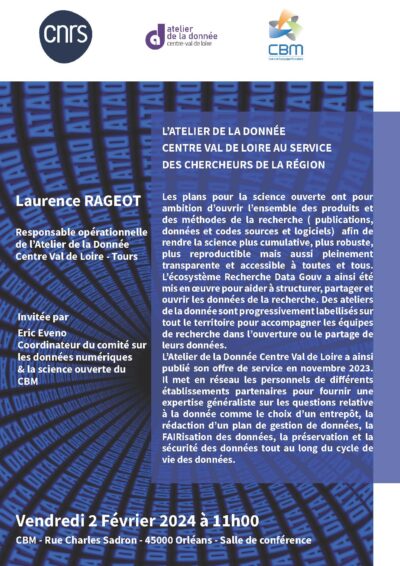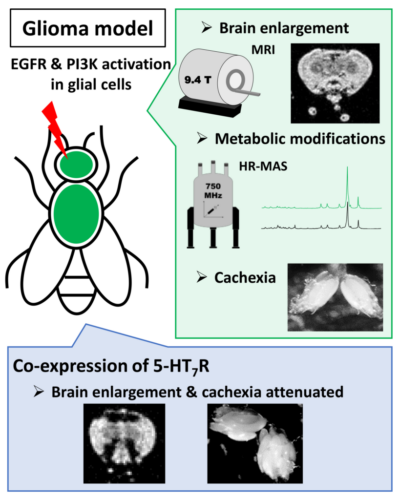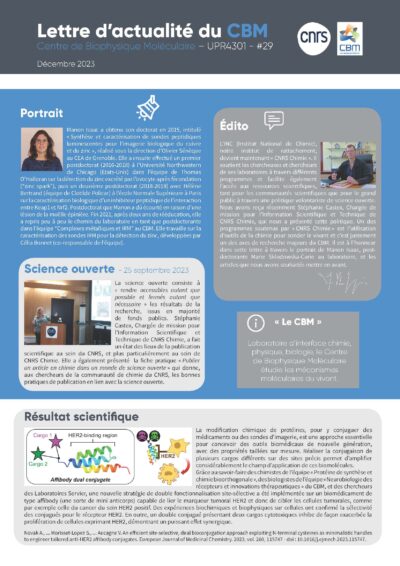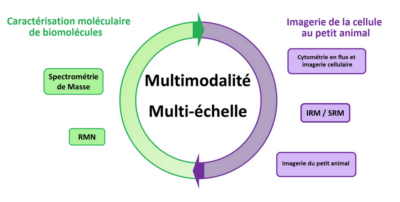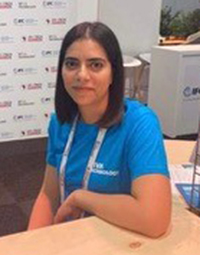Find here all the news from the CBM and beyond
Filtrer par
Marie Curie Postdoctoral Fellowships
With two new "Marie Skłodowska-Curie postdoctoral fellowships" obtained, CBM chemists of the "Synthetic Proteins and Bioorthogonal Chemistry" and the vMetal Complexes and MRI" teams have a total of five of these prestigious European grants ongoing.
New imaging probe enables MRI detection of early-stage breast cancer tumors
A novel imaging probe Gd-K enables successful MRI visualization of early stage 4T1 metastatic breast cancer tumors in mice, with 3-fold contrast enhancement compared to DOTAREM, the MRI clinical gold standard.
Une nouvelle sonde d’imagerie permet la détection IRM de tumeurs du cancer du sein à des stades précoces
Une nouvelle sonde d’imagerie, Gd-K, permet la détection IRM de tumeurs 4T1 métastatiques du cancer du sein à des stades précoces, avec une intensité de signal trois fois plus intense que le DOTAREM, la référence clinique en IRM.
Congratulations to Lylia Azoug for her poster prize!
Her work “An efficient strategy to bioconjugate disulfide-containing peptides via thiol-maleimide chemistry while preserving their bridging pattern” was awarded at the “Chemical Biology Symposium 2024” conference organized by the Société Chimique de France.
Félicitations à Lylia Azoug pour son prix poster !
Son travail "An efficient strategy to bioconjugate disulfide-containing peptides via thiol-maleimide chemistry while preserving their bridging pattern" récompensé lors de la conférence "Chemical Biology Symposium 2024" organisée par la Société Chimique de France.
2 février 2024 - Séminaire du professeur Michael ROWE
"Biogenicity and preservation of trace metals in hot spring deposits: preparing for a Mars sample return mission"
2024, February 2 - Seminar of professor Michael ROWE
"Biogenicity and preservation of trace metals in hot spring deposits: preparing for a Mars sample return mission"
Comprehensive review about the “logic of protein modifications”
The CBM researcher Marcin Suskiewicz published a comprehensive review article that proposes a unifying narrative about protein post-translational modifications (PTMs), including the history of PTM research, chemical and mechanistic principles, and evolution.
La logique des modifications des protéines
Le chercheur Marcin Suskiewicz du CBM a publié un article de synthèse qui propose un récit sur les modifications post-traductionnelles (PTM) des protéines, y compris l'histoire de la recherche sur les PTM, les principes chimiques et mécanistiques et leur évolution.
2 février 2024 - Séminaire de Laurence Rageot
L'Atelier de la donnée Centre Val de Loire au service des chercheurs de la région
2024, February 2
"L'Atelier de la donnée Centre Val de Loire" at the service of researchers in the region
Des recherches sur le gliome (tumeur cérébrale) réalisées au CBM mises en avant par CNRS Chimie
Cancer cérébral : un modèle de gliome chez la Drosophile adulte pour mieux comprendre le développement des gliomes et explorer des pistes thérapeutiques
Research on glioma (brain tumor) carried out at the CBM highlighted by CNRS Chimie
Brain cancer: a model of glioma in adult Drosophila to better understand the development of gliomas and explore therapeutic avenues.
12 janvier 2024 - Séminaire du professeur Gilles GASSER
"Metal Complexes as Diagnostics and Therapeutics"
2024 January, 12 - Seminar of Professor Gilles GASSER
"Metal Complexes as Diagnostics and Therapeutics"
Lettre d'actualité du CBM n° 29 - Décembre 2023
Offre d'emploi
Le CBM recherche un.e Assistant.e Ingénieur.e pour rejoindre la plateforme "MO2VING"
19 décembre 2023 - Soutenance de thèse d'Abir HASSANI
"Modélisation de spectres quasiélastiques de neutrons provenant de protéines en solution".
2023.12.19 - Thesis defensis of Abir HASSANI
"Modélisation de spectres quasiélastiques de neutrons provenant de protéines en solution".
08 décembre 2023 - Séminaire d'Ireneusz LITWIN
"The role of chromatin remodelers in the regulation of cohesin association with the chromatin"


